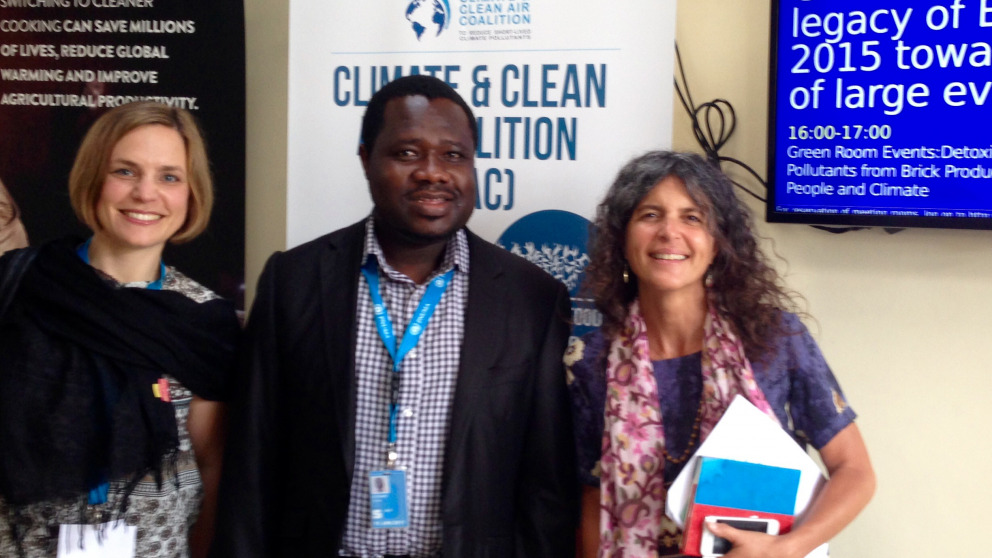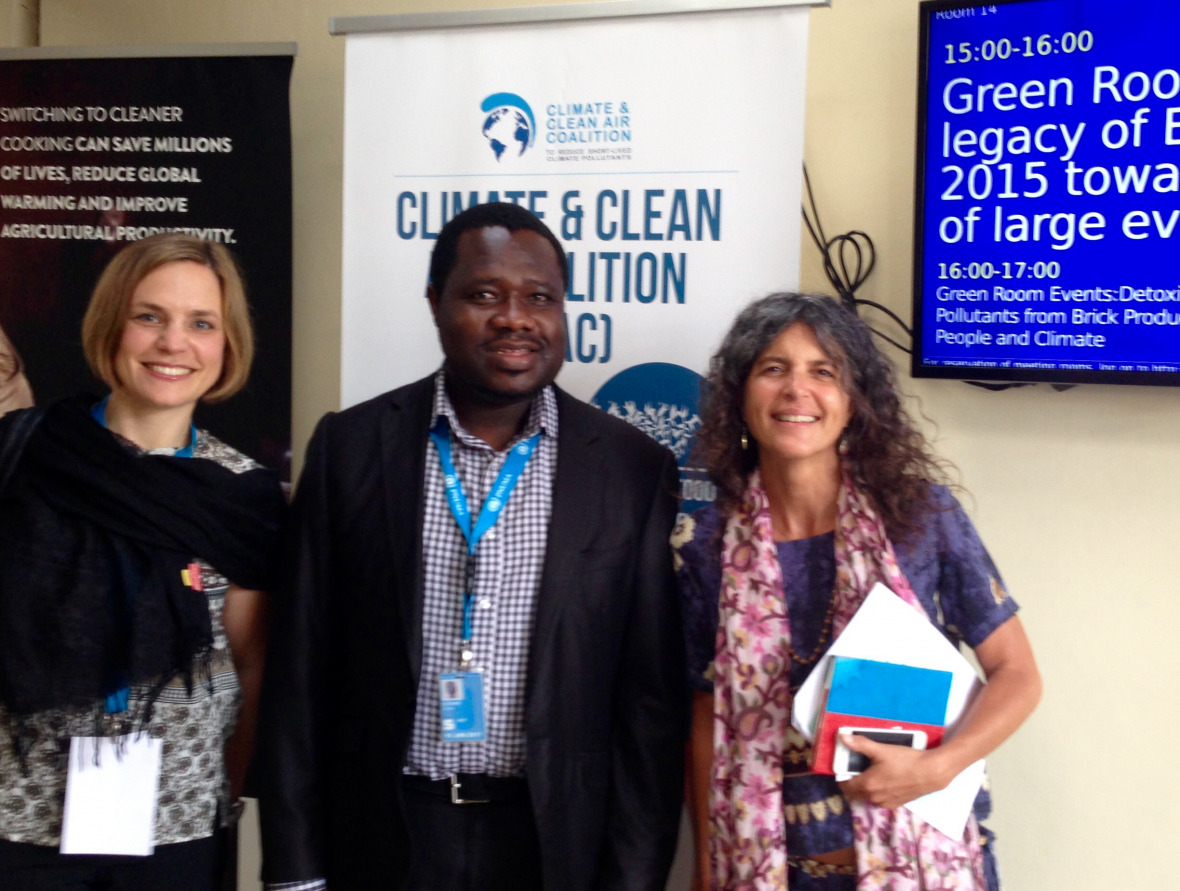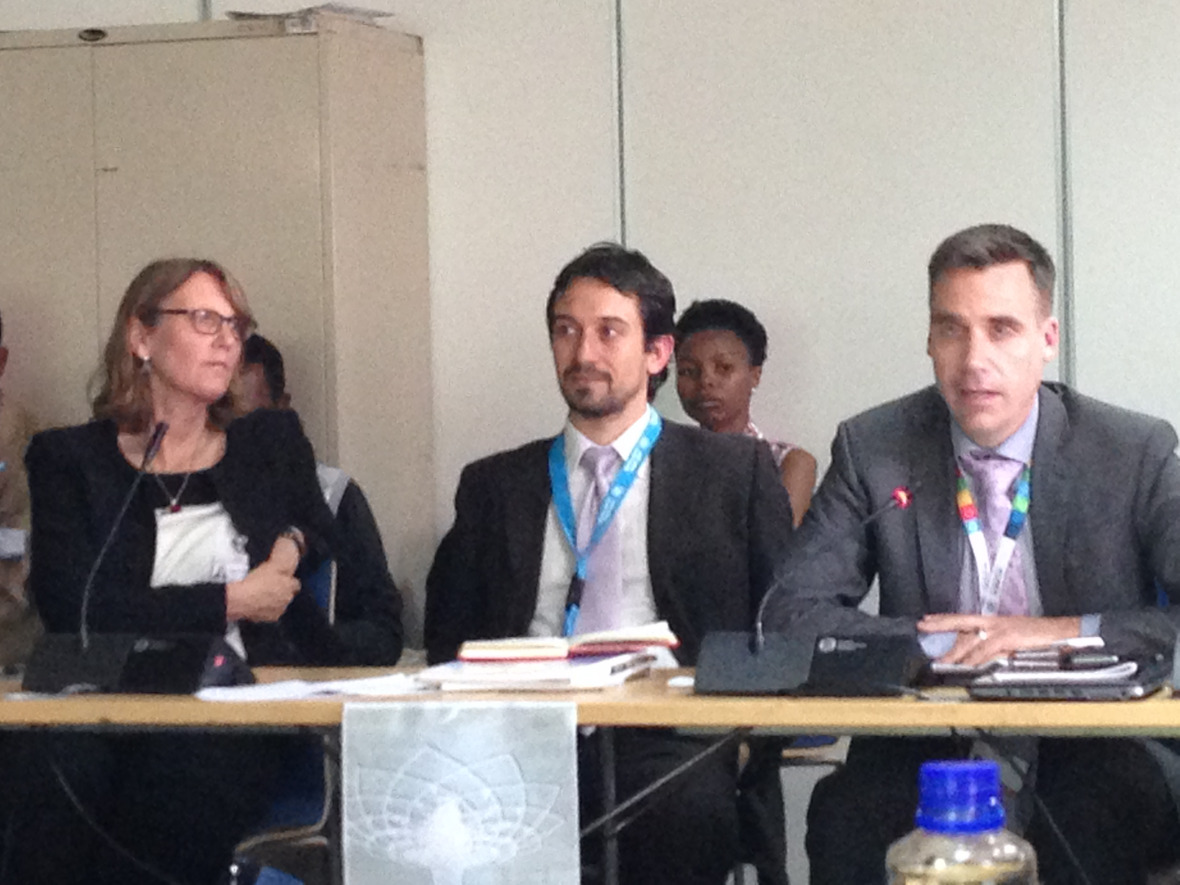Headline:
Benefits for People and Climate: Low-Emission Brick Manufacturing in Focus at UN Environment Assembly
UNEA-2

Brick kilns are significant sources of air pollution in many countries. According to recent studies, introducing new technologies could reduce emissions of black carbon and other short-lived climate-forcing pollutants (SLCPs) by ten to fifty per cent. What could we do to kick-start a “detox process” of this kind? Experts from the fields of science, policy, and civil society came together on 26 May 2016 to discuss this question at a Greenroom Side Event titled “Detoxify: Mitigating Black Carbon and other Pollutants from Brick Production – Multiple Benefits for Healthy People and Climate” at the second session of the UN Environment Assembly (UNEA-2). The event was organised by the IASS together with the Climate and Clean Air Coalition (CCAC) and key partners of the CCAC-led Bricks Initiative.

“In order to achieve the goals of the Paris Agreement on climate change, we have to reduce our emissions of both CO2 and SLCPs such as black carbon, ozone, and methane. Accomplishing this task calls for a comprehensive approach, as both of these contribute significantly to climate change”, said the Managing Scientific Director of the IASS, Mark G. Lawrence. Reducing emissions and improving the efficiency of brick production, the participants agreed, would not only benefit the global climate but could also hold huge potential for local development within affected regions – for human health, the environment, and economic development.
Generating acceptance for new technologies and ensuring their successful implementation requires the involvement of industry representatives, local engineers, and scientists from the start, said Lawrence: “Scientists cannot develop solutions in isolation. And likewise, the major challenges of our time cannot be addressed without scientific input. So let’s continue our efforts to bring all of the relevant actors together and to overcome silos so that we can develop in cooperation the knowledge-based solutions that we need to bring about a sustainable world.”
Immaculate Simiyu from Kenya’s National Environment Management Authority (NEMA) highlighted the potential for improvements in the brick production sector to provide an impetus for further development in Africa. In the light of this, it is crucial that the international community makes sufficient funding available to implement measures and provide subsequent technical support. Simiyu also raised the issue of efforts to regulate emissions from the brick production sector. While most of the affected countries have already adopted suitable guidelines, their implementation and enforcement is lacking. Simiyu called for the creation of better incentive systems to ensure compliance with regulations.

Helena Molin Valdés, the head of the CCAC Secretariat, said that the CCAC is currently expanding its activities in the brick sector in different regions around the world. “Eighty per cent of people living in urban areas are exposed to levels of air pollution that exceed the limits defined by the World Health Organisation. The initiatives of the CCAC target the most important sources of air pollution, including the brick production sector”, she explained. Supported by the IASS research projects SusKat – A Sustainable Atmosphere for the Kathmandu Valley and ELIAS – Environmental Law and Institutions for Air, Climate and Sustainability, the CCAC’s Bricks Initiative is working in Nepal to support the introduction of new kilns to produce higher quality, more earthquake-safe bricks in a less polluting and more energy efficient manner than their predecessors.
The CCAC’s work in this area is important to fostering the development of a cleaner brick industry, said moderator Birgit Lode, who represents the IASS on the CCAC Steering Committee. Lode noted that it was also important to strengthen support for research on the effects of SLCP emissions on local and regional ecosystems and to heighten awareness among politicians and citizens of the implications of these emissions for human health, food security, and the global climate.
